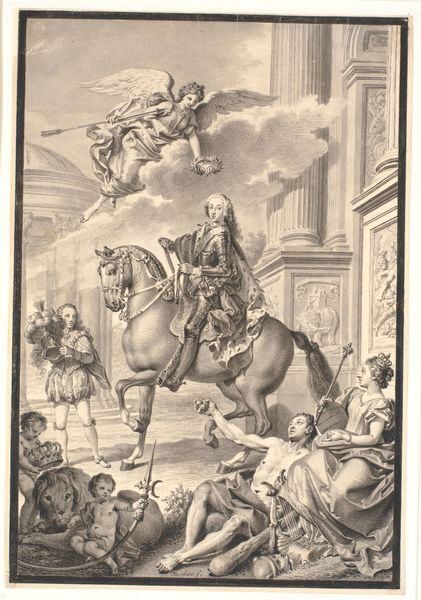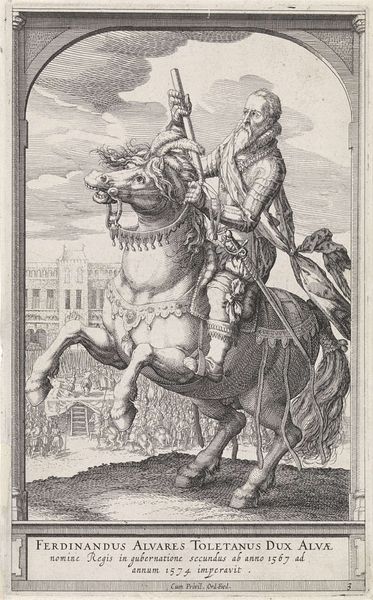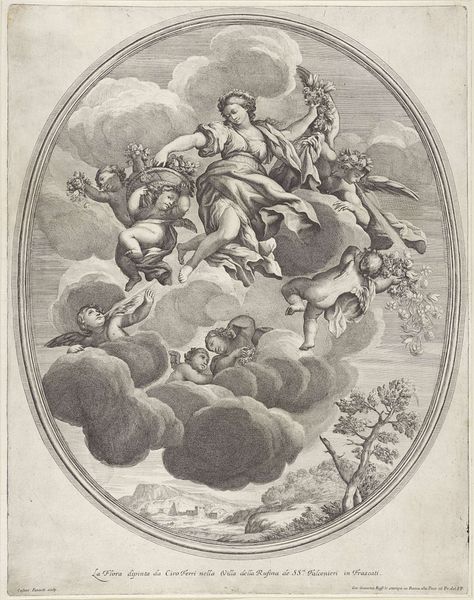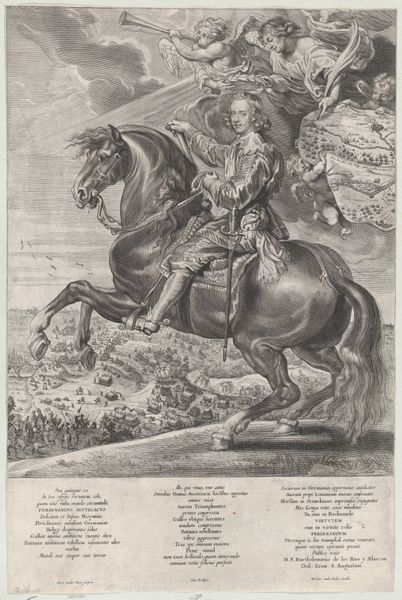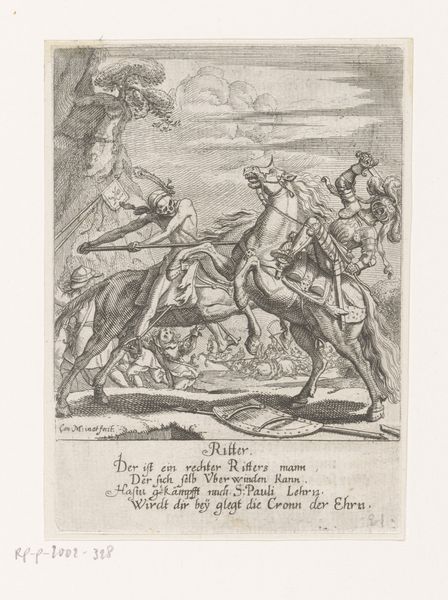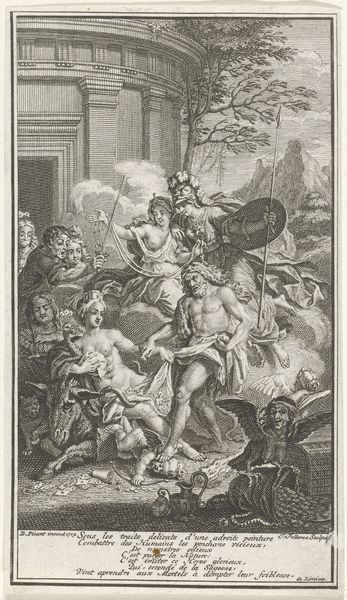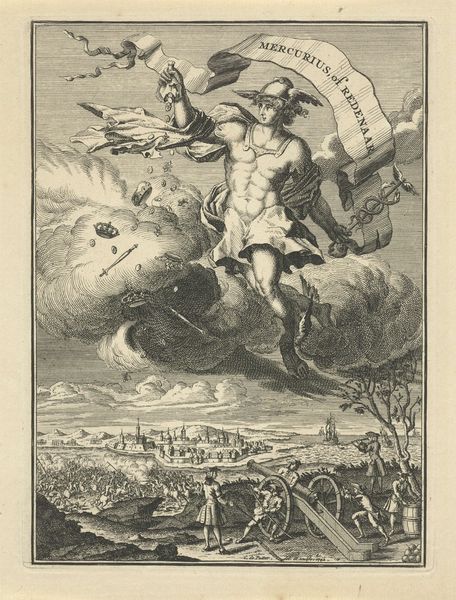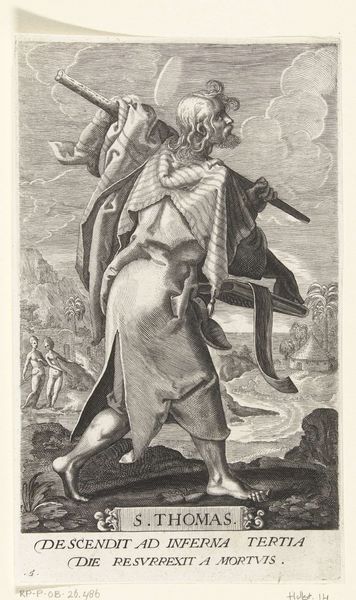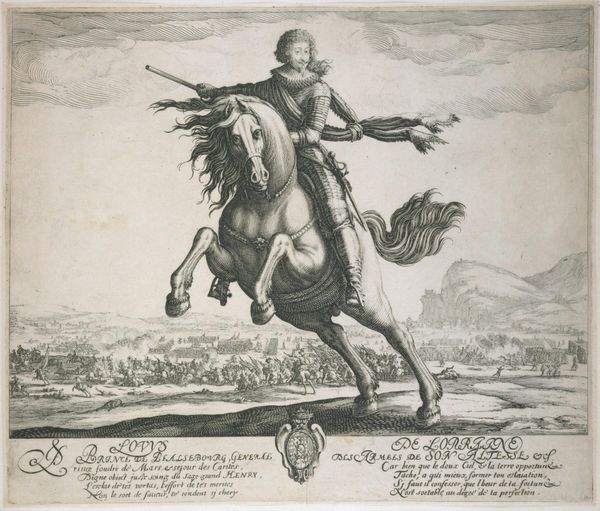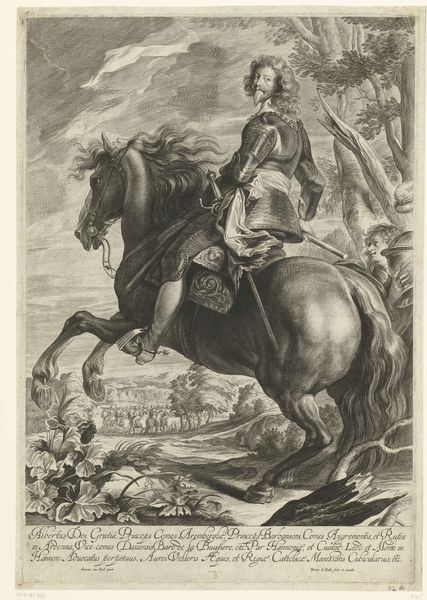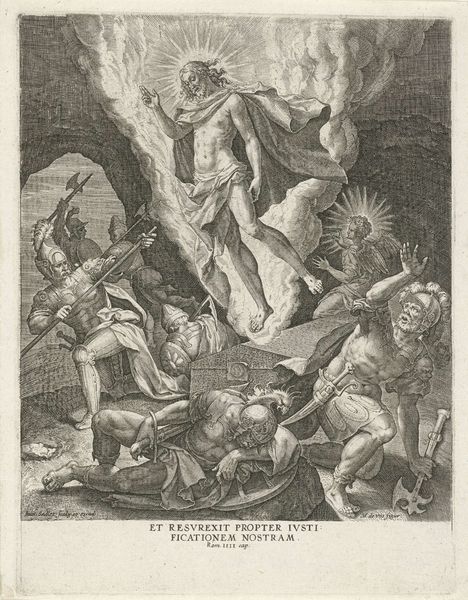
print, engraving
#
narrative-art
# print
#
pen sketch
#
old engraving style
#
perspective
#
figuration
#
line
#
cityscape
#
history-painting
#
engraving
Dimensions: height 267 mm, width 194 mm
Copyright: Rijks Museum: Open Domain
Editor: This is "Marcus Curtius springt in de kloof" by Willem van Swanenburg, made between 1595 and 1612. It's an engraving, currently held at the Rijksmuseum. I'm struck by how dramatic the scene is – the figure on horseback really commands your attention, leaping into… what I assume is the 'kloof,' or the chasm? What do you see in this print? Curator: What strikes me immediately is the construction of heroism in a period of intense socio-political upheaval. Here, we have the figure of Marcus Curtius, a Roman hero, celebrated during the Dutch Golden Age. The print becomes a site where ideas about civic duty, self-sacrifice, and national identity intersect, don’t you think? How does Swanenburg use classical tropes to construct an image of ideal citizenship, given the backdrop of the Dutch Revolt? Editor: I hadn't considered it in relation to Dutch identity at the time, but that context is fascinating. Is the inclusion of the city in the background—perhaps intended as Rome—meant to evoke a parallel with the Netherlands' own urban centers and their struggle for independence? Curator: Precisely. Think about how cityscapes at the time served as emblems of both power and vulnerability. Swanenburg positions Curtius within this tension. The act of leaping into the abyss is not just individual heroism, but a potent metaphor for the sacrifices demanded by a nation fighting for its existence. Is the heroic act coded as masculine sacrifice? Does the landscape appear ravaged? How might feminist theory help us unpack that? Editor: So, beyond just a historical scene, it's really commenting on the Dutch identity through a classical lens. I hadn’t picked up on so many layers of meaning embedded in it. Curator: Exactly! It’s in this dialogue between the artwork, its historical context, and our own contemporary interpretations that it really comes alive, offering a rich tapestry of meaning about the role of gender, citizenship, and national identity then and even now.
Comments
No comments
Be the first to comment and join the conversation on the ultimate creative platform.
